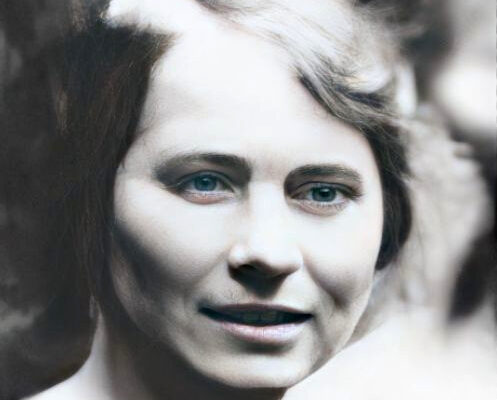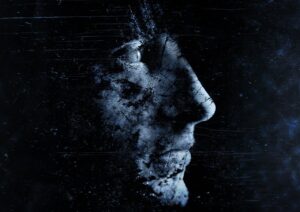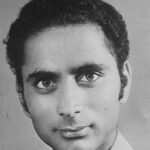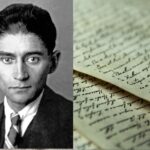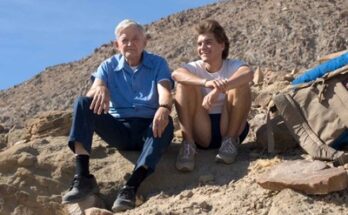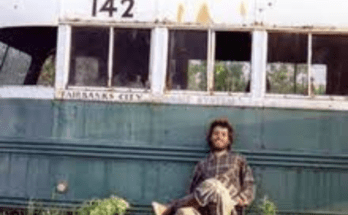“In young women, I find that a feeling of anxiety is normal and moves to the forefront of repressed feelings when the possibility of fulfillment of the wish first appears. It is a well-defined form of anxiety: You feel that the enemy is within; its characteristic ardor compels you, with inflexible urgency, to do what you do not want to do; you feel the end, the transient, before which you vainly may attempt to flee to an uncertain future.
You might ask: Is this all? Is this the high point with nothing more beyond?”
These words are from Sabina Spielrein, a remarkable woman whose life and work have made significant contributions to the field of psychology. Her story is particularly interesting to those studying psychoanalysis, as she was a patient of Carl Jung and later became a psychoanalyst herself.
Sabina Spielrein’s concept of the “DRIVE TOWARD DEATH AND DESTRUCTION” was a profound insight into the complexities of human nature. She published in her paper Destruction as the Cause of Coming Into Being that the urge to destroy was inherent in all of us and that it was intimately connected to the drive to create.
However, she also recognized the potential dangers of unchecked destruction, which could lead to pathological behavior and even self-destruction.
This idea of the “DRIVE TO DESTRUCTION” served as a precursor to Freud’s theory of the death drive, which posits that humans possess an innate drive toward self-destruction and the dissolution of all living things.
Spielrein’s insight highlights the paradoxical nature of human desires and the ways in which destructive impulses can be expressed in seemingly paradoxical ways. Ultimately, understanding the complex interplay between our creative and destructive urges is essential to achieving a balanced and healthy psychological state.
In this blog post, we will explore the life of Sabina Spielrein and her fascinating contributions to psychology, drawing on the research of various scholars in the field.
Table of Contents
Sabina Spielrein’s Early Life and Education
Sabina Spielrein was born in Rostov-on-Don, Russia in 1885. She was the eldest of five children and grew up in a well-to-do Jewish family. Spielrein was a bright and talented student and showed an early interest in psychology.
According to John Kerr, author of “A Most Dangerous Method,
Spielrein “found in psychology a means of understanding and controlling her own turbulent emotions, and a way of directing her intense energies into something positive”.
Spielrein’s Treatment and Relationship with Carl Jung
In 1904, at the age of 19, Sabina Spielrein began experiencing symptoms of what was likely schizophrenia. She was admitted to the Burghölzli psychiatric hospital in Zurich, where she was treated by Carl Jung.
During the summer of 1908, when Sabina Spielrein was in her fourth year of medical school, her relationship with Carl Jung took on an increasingly intimate dimension. Her diaries reveal that she described their encounters as “poetry,” and there is debate among scholars about whether they engaged in sexual intercourse.
Biographer John Launer, in his 2015 book Sex Versus Survival: The Life and Ideas of Sabina Spielrein, concluded that they had consensual and erotic physical contact but did not have sexual penetration. Spielrein herself stated in a letter to her mother that
“So far we have stayed at the level of poetry that is not dangerous.”
Jung himself wrote to Freud about the relationship, first accusing Spielrein of trying to seduce him and later admitting to becoming romantically involved with her. He also sent a series of letters to Spielrein’s mother, suggesting that their relationship could become more intimate.
Spielrein also wrote to Freud about their relationship, describing it as physical and involving “poetry.” She further wrote,
“In the end, the unavoidable happened…it reached the point where he could no longer stand it and wanted ‘poetry’. I could not and did not want to resist, for many reasons
Later Jung resigned from his medical position at the Burghölzli. but continued his laboratory work and teaching at the university. The details of the relationship between Spielrein and Jung, including the correspondence between the two and Freud, are well-documented in Launer’s biography.
The couple resumed their relationship in the summer of 1909 and continued seeing each other privately until Spielrein left Zurich around January 1911. In a private diary entry dated 11 September 1910,
Spielrein expressed her fantasy of having a child with Jung but also recognized the potential consequences for her scientific and professional ambitions, as well as their friendship. She acknowledged the impossibility of the situation and the risk of ruining her chance of finding another love.
In her own words,
With a baby, I would be accepted nowhere. And that would be in the best of cases; what if I did not even get pregnant?
Then our pure friendship would be destroyed by the intimate relationship, and our friendship is what is so terribly dear to me.
Sabina Spielrein’s Theory of Drive To Destruction
After her treatment with Jung, Sabina Spielrein went on to study psychoanalysis and became a practicing psychoanalyst in her own right. She made significant contributions to the field, including her theories on child development and her work on the concept of the DEATH DRIVE.
Sabina Spielrein’s work on the death drive was a revolutionary addition to the field of psychoanalysis. In her seminal papers, she posited that the death drive is a fundamental force that compels human beings to self-destruct and is in constant tension with the life drive.
She argued that this drive was rooted in our earliest experiences of pleasure and played a central role in our development, influencing our ability to form relationships and navigate the world.
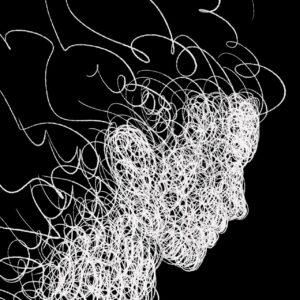
In “Destruction as the Cause of Coming into Being” (1912), Sabina Spielrein theorized the death drive as
The relational drive toward the death of the I, with the possibility of a future rebirth as part of a We.
Spielrein believed that our early experiences of pleasure and pain shape our unconscious drives, leading to the formation of complex psychic structures that can manifest in pathological behavior. Her groundbreaking theory of the death drive paved the way for new insights into the human psyche and continues to be a topic of much interest and debate among psychologists and psychoanalysts today.
According to Peter Gay, who wrote Freud’s biography, Freud: A Life for Our Time, Spielrein’s work on the death drive “anticipated and partially inspired Freud’s own work on the subject”
Spielrein’s ideas about child development were also influential. In her paper “Destruction as a Cause of Coming into Being,” Spielrein argued that children go through a process of psychic development that involves the destruction of their earlier selves. This idea was later picked up by Melanie Klein, who developed it further.
According to psychoanalyst Adam Phillips,
Spielrein’s paper “was an early formulation of an idea that was to become central to psychoanalytic thinking: that mental growth is both a process of creation and of destruction”
Sabina Spielrein’s Legacy
Sabina Spielrein was a trailblazer in the field of psychology, whose work has been overlooked for many years. However, in recent times, there has been a renewed interest in her life and groundbreaking contributions to the field of psychoanalysis. Spielrein’s life story, as depicted in the film “A Dangerous Method.” continues to captivate audiences and inspire a new generation of psychologists and researchers.
As a result of her persistence and dedication, Spielrein’s work challenged traditional views on psychology and human behavior. She was one of the first to propose the concept of the death drive, which argued that individuals possess an innate desire for self-destruction.
Personally, I too was drawn to Spielrein after watching the film “A Dangerous Method.” Her journey, from a troubled patient to a leading psychoanalyst, is a testament to the transformative power of psychoanalysis and the human spirit.
Spielrein’s impact on the field of psychology continues to be felt today, and her story inspires many who seek to better understand the complexities of the human mind.
Must Read: Kafka’s Letter to His Father ― An In-Depth Analysis
The Best Books: Recommended Reading Lists
1. Best Books That Teach the Art of Living a HAPPIER LIFE
2. Best Books on STOCK MARKET & INVESTING
3. Best Books To Help You Find HOPE During Your Darkest of Times
4. Best Books on Learning & Mastering SONGWRITING
5. Must-Read Books on Punjab’s History and Culture
6. Best Books That Talk about SOLOGAMY
7. Books Chris McCandless Took On His Journey ― INTO THE WILD
8. 7 Alan Watts Books That Talk About Human Existence
9. From Ph.D. To Industry: 4 Best Books To Aid Your Transition
10. Inspiring Ambitions: Autobiographies of Cricketers Who Made It Big
11. Best Books Debating the Existence of Free Will
12. Books To Understand Blockchain Technology
That’s all we have for today.
Thanks a lot for tuning in to HappinessDhaba. Do let me know your views on this in the comment section.
Signing off with my favorite words
Zindagi Zindabad!
Author Profile

- Psychologist | Engineer | Reader | Blogger
-
An Engineer-Turned-Psychologist who loves Literature.
Let's Connect!
Recent Posts
 The Punjabi LiteratureJuly 14, 2025Paash on the Death of Dreams ― Sab Ton Khatarnak
The Punjabi LiteratureJuly 14, 2025Paash on the Death of Dreams ― Sab Ton Khatarnak Blog PostsApril 6, 2025Rebuilding Identity After The Self Falls Apart | by Jasmeet
Blog PostsApril 6, 2025Rebuilding Identity After The Self Falls Apart | by Jasmeet Book Summaries & LessonsFebruary 6, 2025BURN IT ALL: Kafka’s Legacy and the Friendship That Saved It
Book Summaries & LessonsFebruary 6, 2025BURN IT ALL: Kafka’s Legacy and the Friendship That Saved It Life Through SongsJanuary 16, 20256 Best Punjabi Sufi Songs ― The Ultimate Sufi Playlist
Life Through SongsJanuary 16, 20256 Best Punjabi Sufi Songs ― The Ultimate Sufi Playlist
